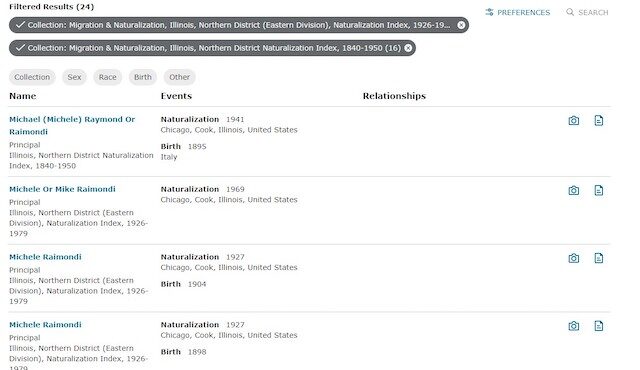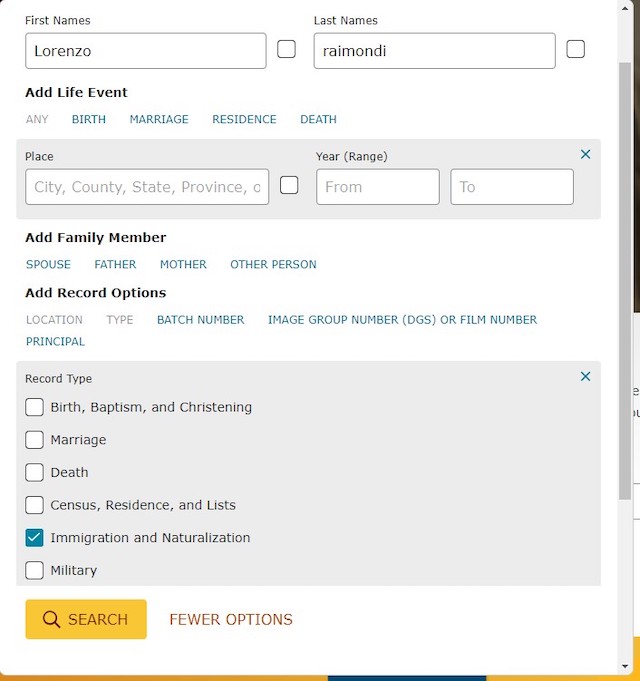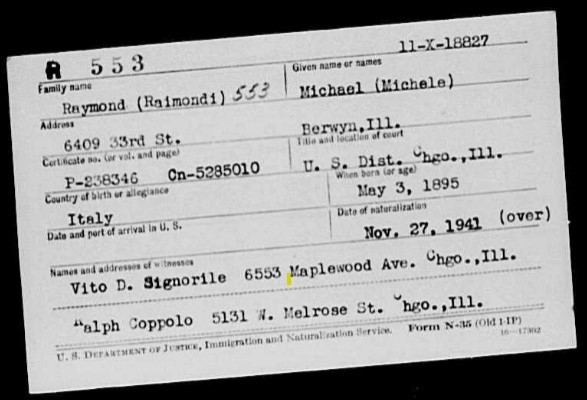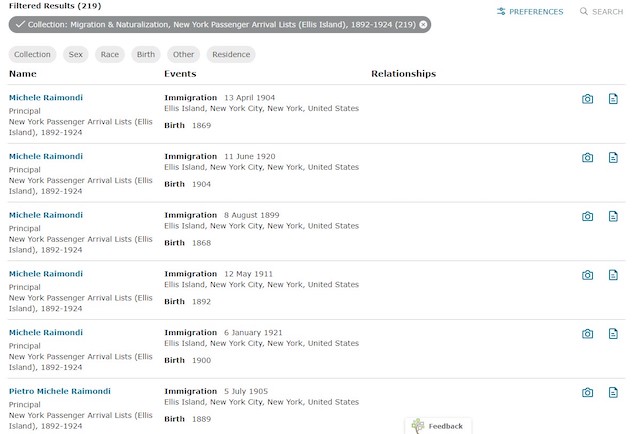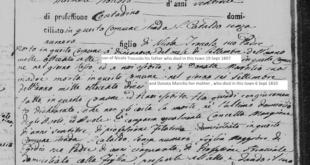Many Fra Noi readers were born in Italy, or their parents were. They have the easy task of knowing what town the family came from. And then there are the rest of us.
When I was much younger, my Polish grandmother told me that her family came from Krakow and my Italian grand-aunt told me that her family came from Bari. Both were close, but no Toscano cigar!
Neither one realized that you need to know the actual small town your family came from to adequately conduct genealogical research. The nearby big city is not good enough. Italy managed its civil records at the local level. We may be used to the records being done at the county level in Chicagoland, but Italy local comune government took care of this back in the old days.
When you go through the records of a town, you can picture the clerk working. If the town is larger (say, Bari) and has 4,000-5,000 births per year, you can see them frantically writing a dozen births per day. If the town is much smaller (say, Cellamare in provincia di Bari), and has 50-75 births per year, the clerk takes a long nap every day while waiting for someone to be born.
I learned the hard way many years ago that when I searched the big city for the records of the smaller town, I found nothing and was about to give up. My Polish grandmother had died by the time I started researching and my Italian grand-aunt told me we were from Tree-John!! Unfortunately, she couldn’t spell it correctly but at least I had a clue. My parents really didn’t know where their parents were born. They grew up during World War II when it was critical to the war effort to drop the ethnic identities and be 100% American. So they just never asked.
So if you have no relatives who can tell you the name of the town (and there could be more than one town), you have to hope that someone wrote it on an American document. So what kinds of documents are available that could help?
For people who were born in Italy during the late 1800s and early 1900s, you have a few choices. You also have some documents that won’t help much. I recently talked about the U.S. Census in a couple of columns and unfortunately, they only say the name of the country or the U.S. state/territory. So it won’t help you find the town in Italy, or Illinois, for that matter.
My favorite place to find the town of origin is the Petition for Naturalization. There are a few issues to deal with regarding the Petition.
- The good news is they are usually typed, so you eliminate handwriting problems.
- The bad news is they spell the town name the way the applicant says it, so the town name is not always correct.
- Not everyone from Italy became a U.S. citizen, and some may have become a U.S. citizen in another state and you don’t know this.
- To be sure that the person you are looking for is the right one, you need to see the name of their spouse, or their birthdate, or children’s names on the petition, just to be sure you have the right family.
Another type of record that typically shows the birth town in Italy is the passenger list.
- The good news is that these are written in Italy at the port of embarkation, so town names and family surnames are spelled much more accurately.
- The bad news is that you need to see other family members on the same passenger list. The men frequently traveled with other men from their town, without their wives and children, because they needed to be sure they could send the money over for their passage.
- Women are listed on passenger lists under their maiden name. If you do not know the maiden name, you won’t be able to find them in the passenger lists unless they traveled with their husbands.
If your family came from Italy to Chicago, you will be searching the FamilySearch records. Open Familysearch.org. Click “Search” then click “Records”.
When you see the search page, click “Type” and check the box “Immigration and Naturalization”. This will bring up both naturalization records and passenger lists.
The passenger lists in the index don’t have a lot of identifying information. No town of origin. Sometimes a birth year, sometimes not. The naturalizations only search an index for northern Illinois, not the records themselves. You may need to limit the collection to “Illinois, Northern District Naturalization, 1840-1950” or “Illinois, Northern District (Eastern Division) 1926-1979”.
The index only shows the year of birth and the year of naturalization. Hopefully the year of birth gets you close. If your relative was born in 1897, check any record with a birth year of 1896-1898. To see the index card with more details, click the camera to the right of the person on the screen.
The index card that you just found contains more info to help you determine if this is the correct ancestor.
Card #1 has a Michele Raimondi aka Michael Raymond, born May 3 1895. It turns out that this is not my person, so I go back to the search results. The next card is for someone from the 1926-1979 index. He is 23 years old but they do not list his birthday, and he was naturalized in 1927. Therefore he isn’t the right one either.
You have to click the camera of each record until you find one worth finding in the actual petitions.
To check passenger lists, you should select the collection “Migration and Naturalization, New York passenger Arrival Lists (Ellis Island), 1892-1924.”
You’ll at least see a birth year (plus or minus one) and the date of immigration. Again, you should click the camera to see the passenger list and if you’re lucky, you can tell whether this person is the one you want.
One advantage of finding the Naturalization petition is that it will mention the ship and arrival date and the way the name was spelled. You can then use that to find the passenger list with certainty.
Next month I will go through the tricks of finding the correct records in more detail.
 Fra Noi Embrace Your Inner Italian
Fra Noi Embrace Your Inner Italian


